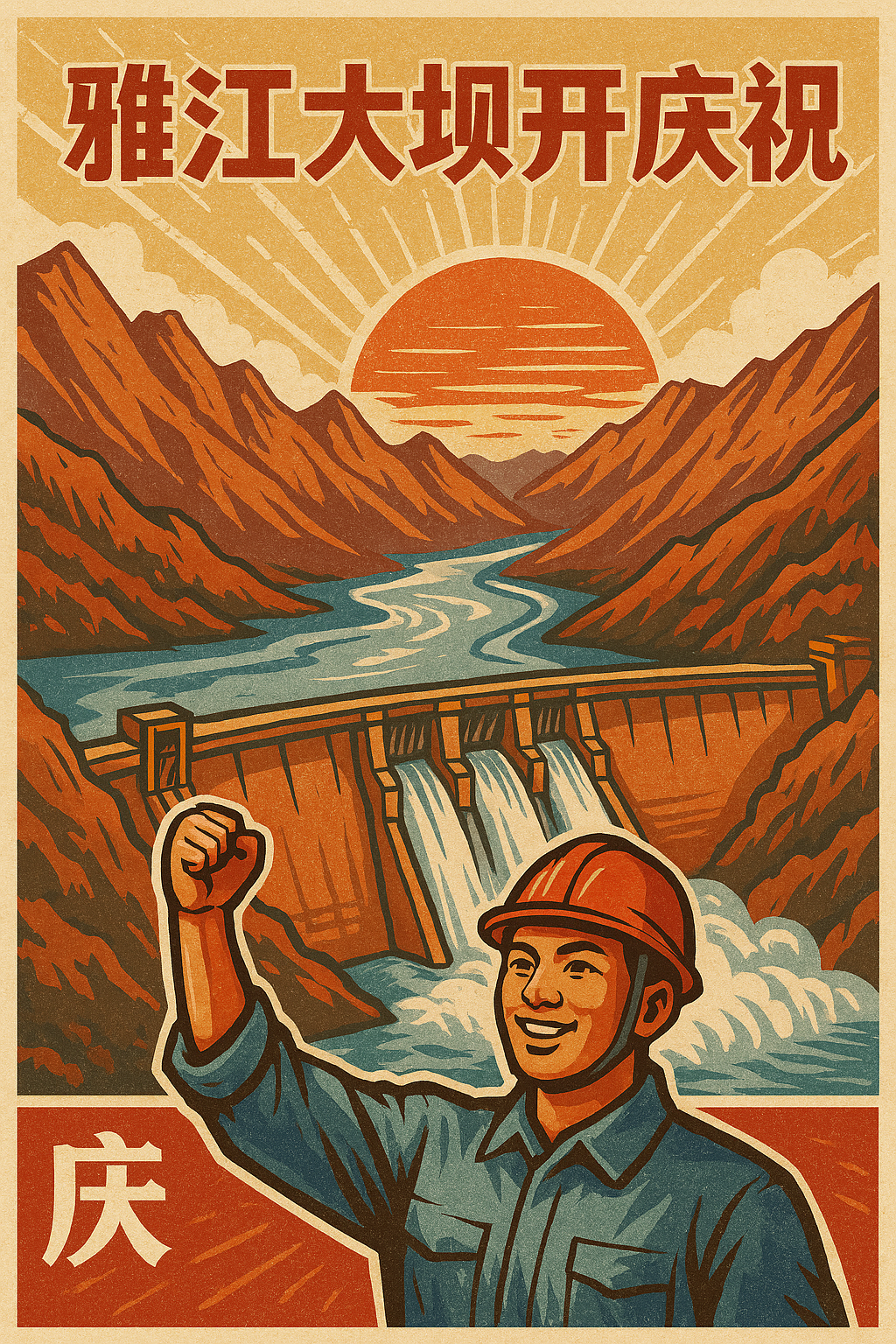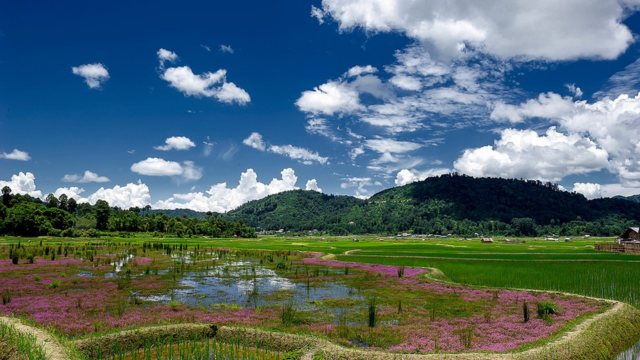China’s Brahmaputra mega-dam endangers India’s water security, ecology, and strategic stability, extending aggression from borders to rivers.
by Imran Khurshid

China’s ongoing construction of a massive hydropower dam on the Yarlung Tsangpo River—known as the Brahmaputra once it enters India—has far-reaching strategic, environmental, and geopolitical implications for India. As a lower riparian state already entangled in a protracted border dispute and broader strategic rivalry with China, New Delhi is bound to view this development with deep concern and apprehension. Although Chinese officials—including Foreign Ministry spokesman Guo Jiakun—have insisted that the dam “will not have any negative impact on downstream regions” such as India and Bangladesh, China’s actions often speak louder than its words.
The situation becomes even more alarming when viewed in the context of China’s recent behaviour. Beijing openly supported Pakistan during “Operation Sindoor” by supplying military hardware and real-time satellite intelligence. Against this backdrop, China’s dam project is naturally perceived in New Delhi as a hostile maneuver—part of a broader pattern of strategic encirclement.
What intensifies India’s apprehensions is the recognition that this dam could serve as a potential tool of strategic coercion. China’s control over the upstream flow of the Brahmaputra gives it the capacity to manipulate water resources—either by withholding water during dry periods or releasing it excessively to trigger floods. In times of crisis or diplomatic confrontation, such control could be weaponized to deter, punish, or extract concessions from New Delhi. This raises serious fears that water, one of the most vital and irreplaceable resources, may become a non-kinetic instrument of warfare—capable of undermining India’s national security without firing a single shot.
This concern is not hypothetical. China claims Indian territory, including Arunachal Pradesh, which it calls “South Tibet.” Such moves reaffirm China’s adversarial posture towards India. It has repeatedly demonstrated its readiness to exploit asymmetric tools as part of its gray zone warfare tactics to gain a strategic advantage without triggering open conflict. The construction of this enormous dam—touted as the world’s largest hydropower project—is not merely a routine infrastructure undertaking but a calculated move in this broader strategic calculus. It holds the potential to drastically alter river flows, displace communities, and destroy biodiversity across Indian states like Arunachal Pradesh and Assam, as well as downstream Bangladesh.

This massive dam poses significant risks to the water security, ecology, and livelihoods of millions of people downstream in Arunachal Pradesh, Assam, and Bangladesh. As Arunachal Pradesh Chief Minister Pema Khandu warned, “The potential disruption of water flows, flooding, and ecosystem degradation could have far-reaching consequences.”
The Brahmaputra basin supports unique and fragile ecosystems. It is home to endangered species like the Gangetic dolphin and numerous migratory birds. Altered river flows could devastate these habitats, leading to a sharp decline in biodiversity. Fish populations, which rely on the river’s natural flow for breeding, may be seriously threatened—harming not just the environment but also local fishing communities.
Expressing concern, Arunachal Pradesh Chief Minister Pema Khandu further stated: “The issue is that China cannot be trusted. No one knows what they might do… Setting aside the military threat from China, it seems to me that this is a far bigger issue than anything else. It is going to cause an existential threat to our tribes and our livelihoods. It is quite serious because China could even use this as a sort of water bomb.”
Moreover, the region where China is constructing this dam—marked by the Himalayan thrust, the trans-Himalayan faults, and the Yarlung Zangbo suture zone—is highly seismically active. According to The New Indian Express, these fault lines are already under significant stress due to a combination of population growth, climate change, and Beijing’s aggressive pursuit of hydroelectric power to meet green energy targets. A U.S. Geological Survey report has also flagged this region’s extreme vulnerability, referencing the catastrophic 1950 Assam-Tibet earthquake, which registered a magnitude of 8.6.
Moreover, experts have pointed out that China’s previous megastructure, the Three Gorges Dam, was so massive that it reportedly caused a slight reduction in the Earth’s rotation speed and even shifted the planet’s axis. If Beijing proceeds with another mega-dam in such a fragile region, it could trigger similar planetary and seismic consequences—raising the stakes beyond geopolitics into the realm of existential risk.
If such a colossal dam were to collapse due to seismic activity—or if China were to deliberately release massive quantities of water as an act of hostility—it could unleash catastrophic flooding across downstream regions in India and Bangladesh. Given China’s authoritarian political system, characterized by opaque decision-making and a growing track record of strategic assertiveness, such scenarios are not beyond the realm of possibility. As one Indian leader starkly warned, it could effectively serve as a “water bomb.”
Beyond the ecological concerns, the geopolitical ramifications are severe. Once completed, China could use the dam as a strategic pressure point, manipulating water flows to exert influence or destabilize India. As of now, Beijing is already leveraging Pakistan against India and attempting to co-opt other South Asian countries into its strategic orbit. There is every reason to believe that China could use this dam as a future tool of coercion.
Despite the façade of trade and engagement, China has repeatedly acted in ways that directly undermine India’s security interests. Its duplicity was evident in its delayed and ambiguous response to the Pahalgam terror attack. Although Beijing initially issued a generic condemnation, it refrained from naming The Resistance Front (TRF) or attributing blame. Only after the United States officially designated TRF as a terrorist organization did China issue a second, sharper statement expressing “strong condemnation” and calling for regional cooperation on counterterrorism. However, even then, it stopped short of naming TRF or acknowledging Pakistan’s role. This selective outrage exposes Beijing’s geopolitical motivations—if China were genuinely serious about terrorism, it wouldn’t have waited for a cue from Washington. As always, China’s actions, rather than its words, reveal its true intentions.

The Galwan Valley clash during the COVID-19 pandemic stands as a stark reminder of China’s opportunistic aggression. At a time when India was grappling with a devastating health crisis, Beijing launched a surprise attack on Indian troops in Ladakh’s Galwan Valley, leading to the death of 20 Indian soldiers. This brutal incident shattered any residual trust in China and revealed its readiness to exploit India’s moments of vulnerability for strategic gain. In the aftermath, China also circulated fake videos—including manipulated visuals of dead bodies floating in the Ganges—as part of a psychological warfare campaign aimed at undermining India’s global image during the pandemic.
As Uttam Kumar Sinha of the Manohar Parrikar Institute of Defence Studies and Analyses has warned, “India has to understand China’s behaviour.”
China’s rhetoric about an “Asian Century” or the “Elephant-Dragon Tango” belies a stark reality. Beneath the diplomatic language lies a strategy of aggression, subversion, and manipulation. As the old saying goes, China may extend a handshake with one hand while hiding a knife in the other.
India must act decisively. There should be no debate about whether the dam poses a threat—the real question is how India can effectively counter it. The Indian government must begin implementing strong countermeasures now. These may include accelerating India’s own dam projects to manage water flow, enhancing satellite mapping and monitoring systems, and conducting international diplomacy to raise awareness about the risks.
Delaying action will only embolden China. A passive approach will weaken India’s regional position, erode national confidence, and increase the likelihood of future water-based coercion. The time to act is now—before it’s too late. India should not be left with regrets, the way Nehru was when he trusted China’s rhetoric—only to face betrayal in 1962.

Imran Khurshid, Ph.D., currently serves as an Associate Research Fellow at the International Centre for Peace Studies (ICPS), New Delhi, and as an Adjunct Fellow at the Peninsula Foundation. His research focuses on India–US strategic relations, Indo-Pacific security, and the intersection of geopolitics and emerging technology. He has published in academic journals and in magazines such as “The Diplomat,” “Asia Times,” “Firstpost,” “The Pioneer,” and “Eurasian Times.”




